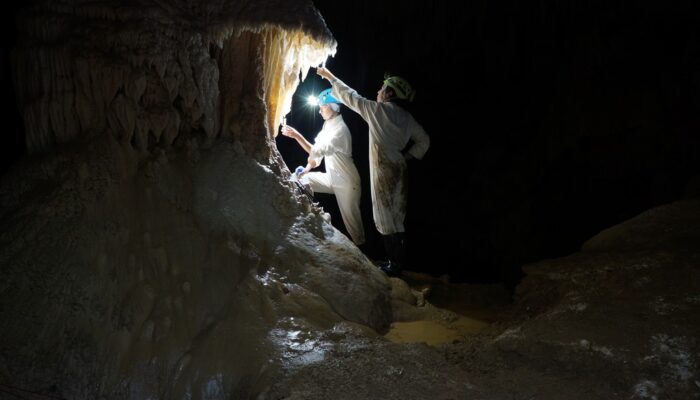The photo shown here shows typical sampling work underground. You can see Ola Kwiecien and Cinthya Nava Fernandez, researchers at Ruhr University Bochum in Germany, collecting dripwater in New Zealand’s Waipuna Cave as part of a four-year EU-funded monitoring programme. Our research aims at developing innovative geochemical indicators that we can use to quantify changes in the hydrological system ...[Read More]
Imaggeo on Mondays: Our QUEST for innovative tools to understand changing environments and climates

A multi-year cave monitoring programme in New Zealand's Waipuna Cave focusses on developing novel quantitative proxies for palaeoclimatology. We measure drip rate, temperature, electrical conductivity and many other parameters, analyse the isotopic and elemental composition of the water, and compare our results with the length and origin of recorded rainfall. With our data, we hope to better understand the interplay of the El Nino-Southern Oscillation and the Southern Westerlies and the local response to changes in their dynamics. This monitoring is part of the EU Marie Curie RISE Project "QUantitative palaeoEnvironments from SpeleoThems – QUEST". Credit: Sebastian Breitenbach (distributed via imaggeo.egu.eu)
